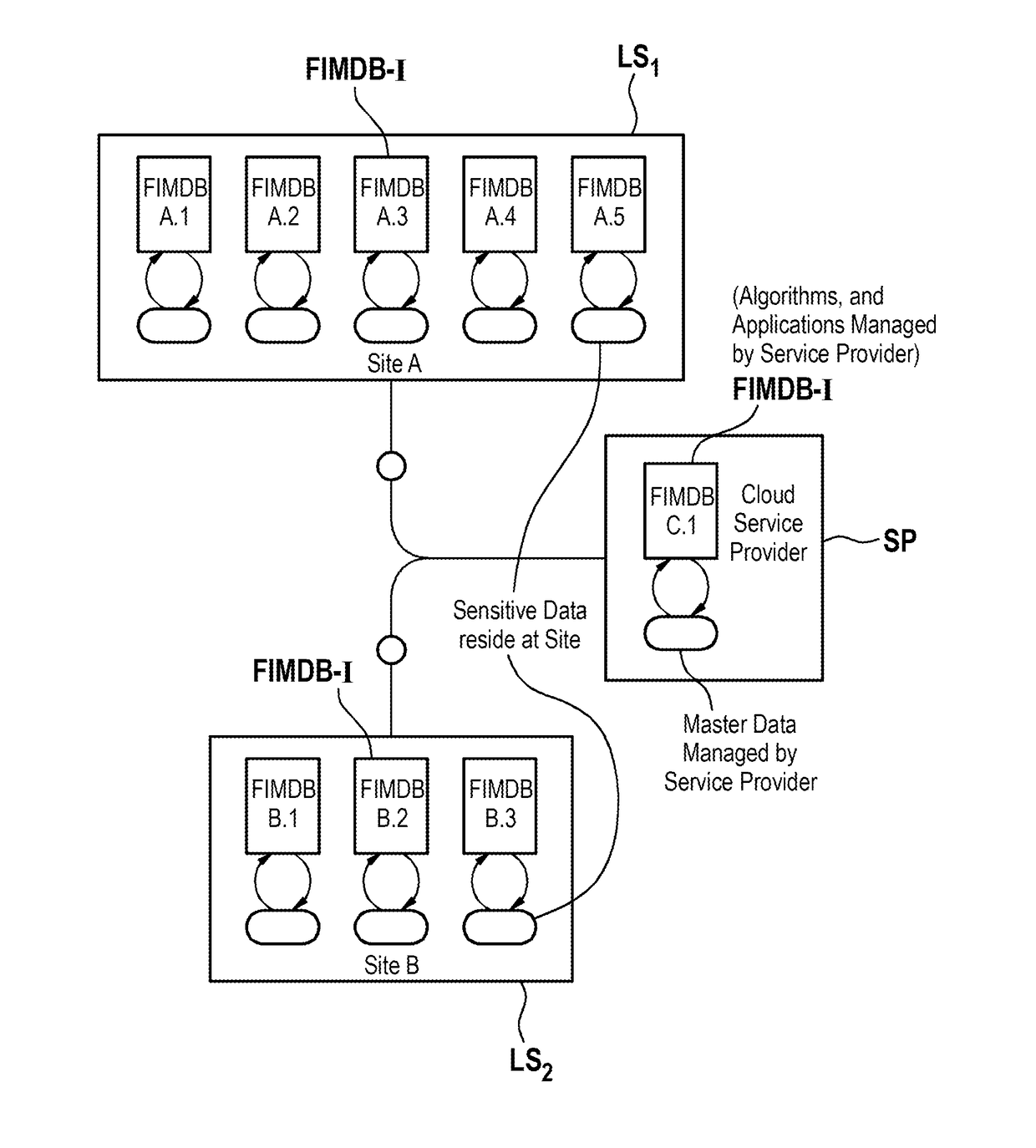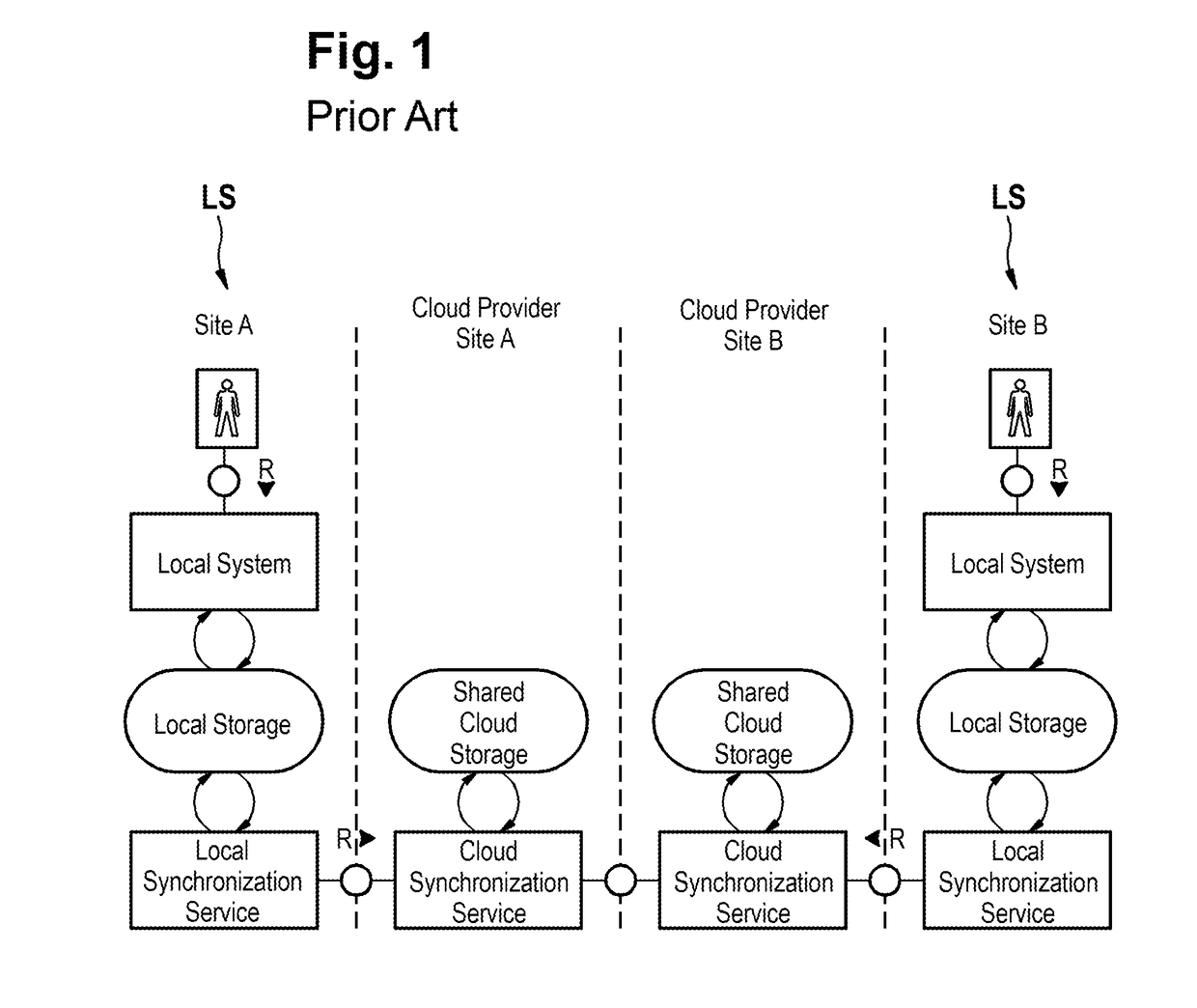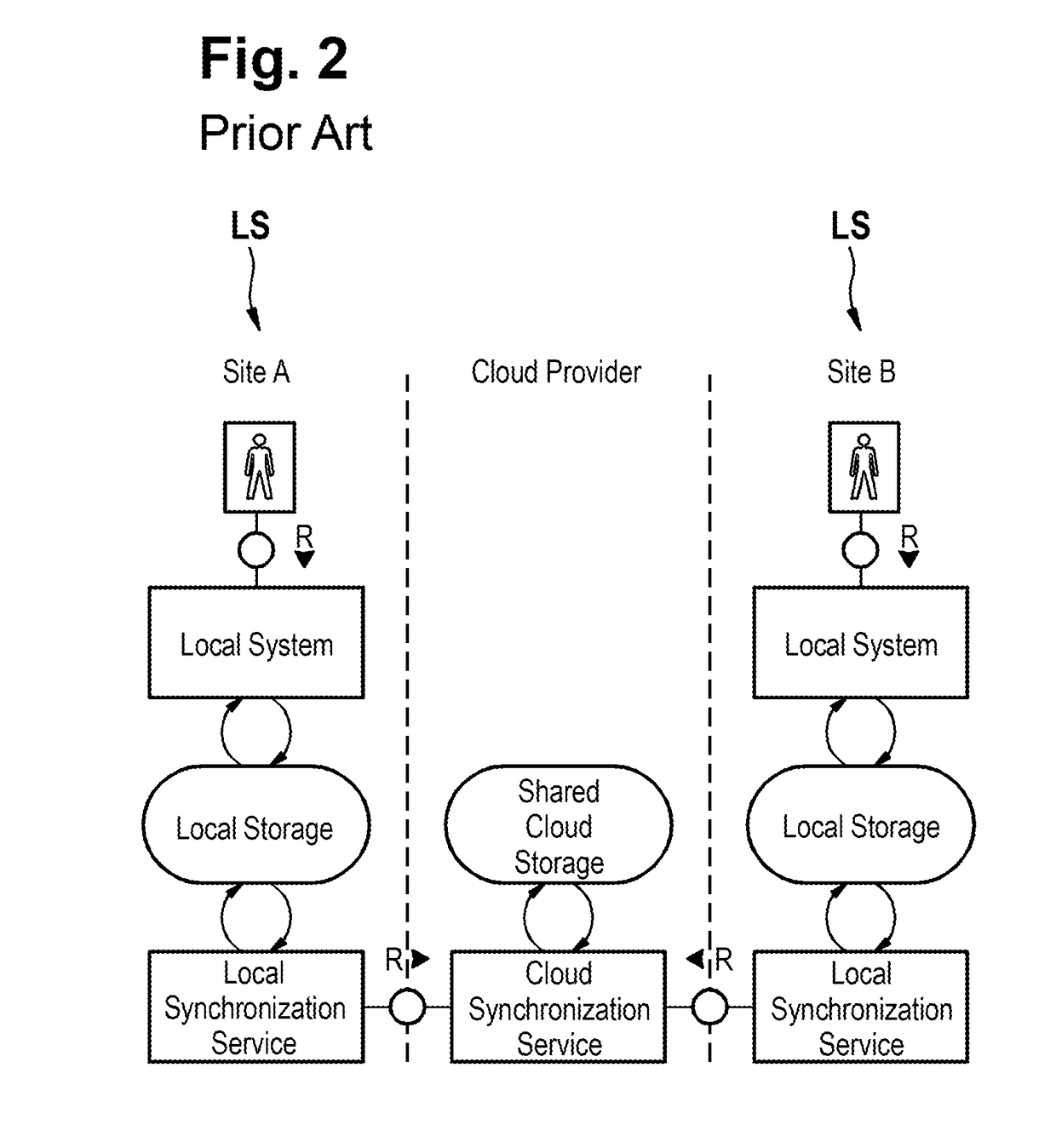Cloud-based hardware architecture
a hardware architecture and cloud technology, applied in the field of cloud-based hardware architecture, can solve the problems of high-speed interconnection between cloud providers, time-consuming review, and manual review, and achieve the effect of scalability of computing resources and eliminating data transfers
- Summary
- Abstract
- Description
- Claims
- Application Information
AI Technical Summary
Benefits of technology
Problems solved by technology
Method used
Image
Examples
Embodiment Construction
[0089]FIG. 5 depicts a federated in memory database system (shortly: FIMDB) software architecture according to an embodiment of the invention and modeled as Fundamental Modeling Concepts (FMC) block diagram [3]. It stresses the fact that sensitive data and computing resources are mainly located on local sites and—according to the invention—will not leave the local site for the purpose of dataset processing. All local sites form together the FIMDB system. Compared to all other setups in the state of the art, the FIMDB approach according to the invention does not require any upload of data, which is shown in the application scenario as described in the examples below.
[0090]In FIG. 5, the local in memory database instances are referenced with the reference numeral FIMDB-I, because they are already connected with each other in order to build the federated in memory database system. As can be seen, local site LS1 comprises five (5) local in memory database instances FIMDB-I with sensitiv...
PUM
 Login to View More
Login to View More Abstract
Description
Claims
Application Information
 Login to View More
Login to View More - R&D
- Intellectual Property
- Life Sciences
- Materials
- Tech Scout
- Unparalleled Data Quality
- Higher Quality Content
- 60% Fewer Hallucinations
Browse by: Latest US Patents, China's latest patents, Technical Efficacy Thesaurus, Application Domain, Technology Topic, Popular Technical Reports.
© 2025 PatSnap. All rights reserved.Legal|Privacy policy|Modern Slavery Act Transparency Statement|Sitemap|About US| Contact US: help@patsnap.com



